Educational Handout Report 2022
VerifiedAdded on 2022/09/27
|6
|567
|21
AI Summary
Contribute Materials
Your contribution can guide someone’s learning journey. Share your
documents today.
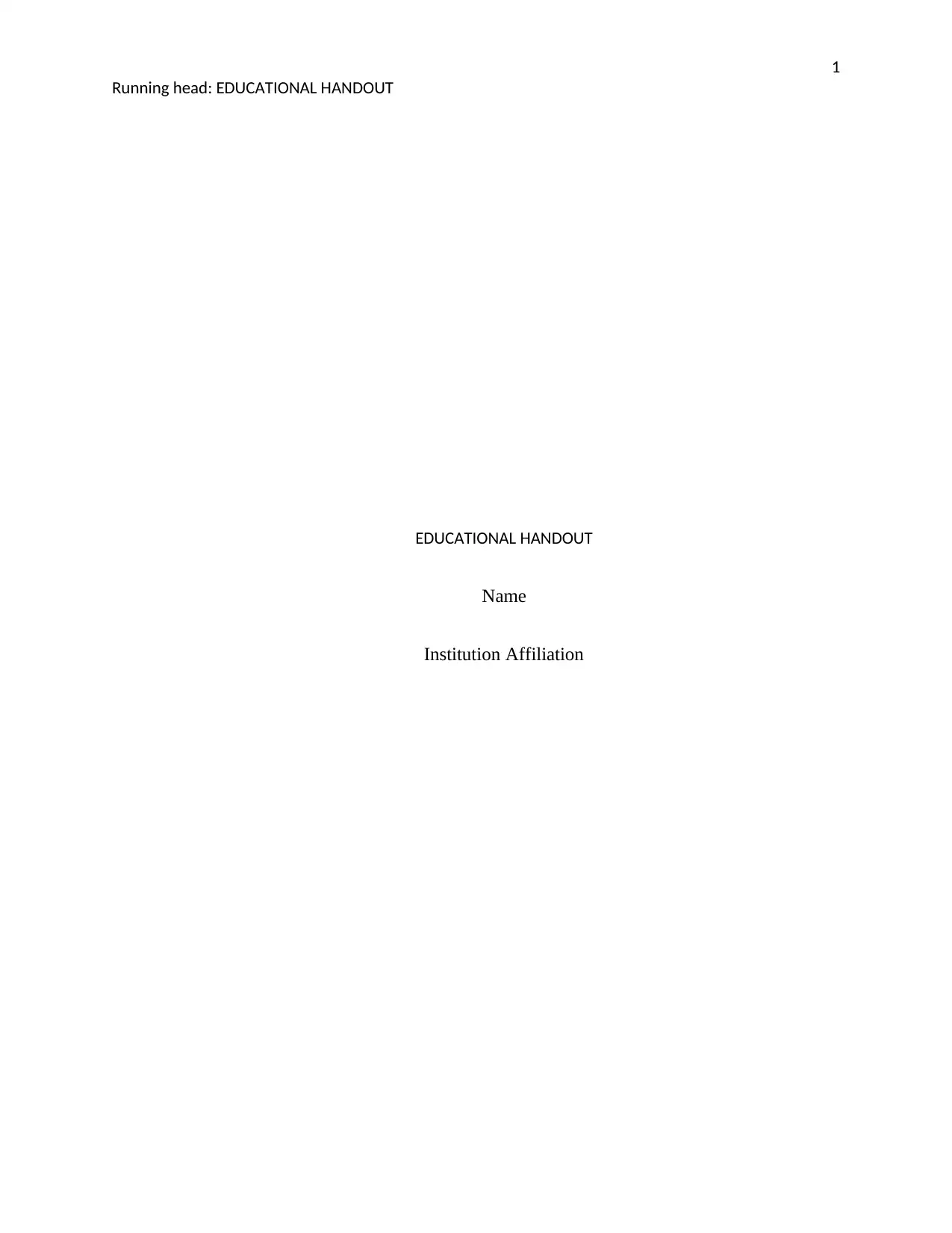
1
Running head: EDUCATIONAL HANDOUT
EDUCATIONAL HANDOUT
Name
Institution Affiliation
Running head: EDUCATIONAL HANDOUT
EDUCATIONAL HANDOUT
Name
Institution Affiliation
Secure Best Marks with AI Grader
Need help grading? Try our AI Grader for instant feedback on your assignments.
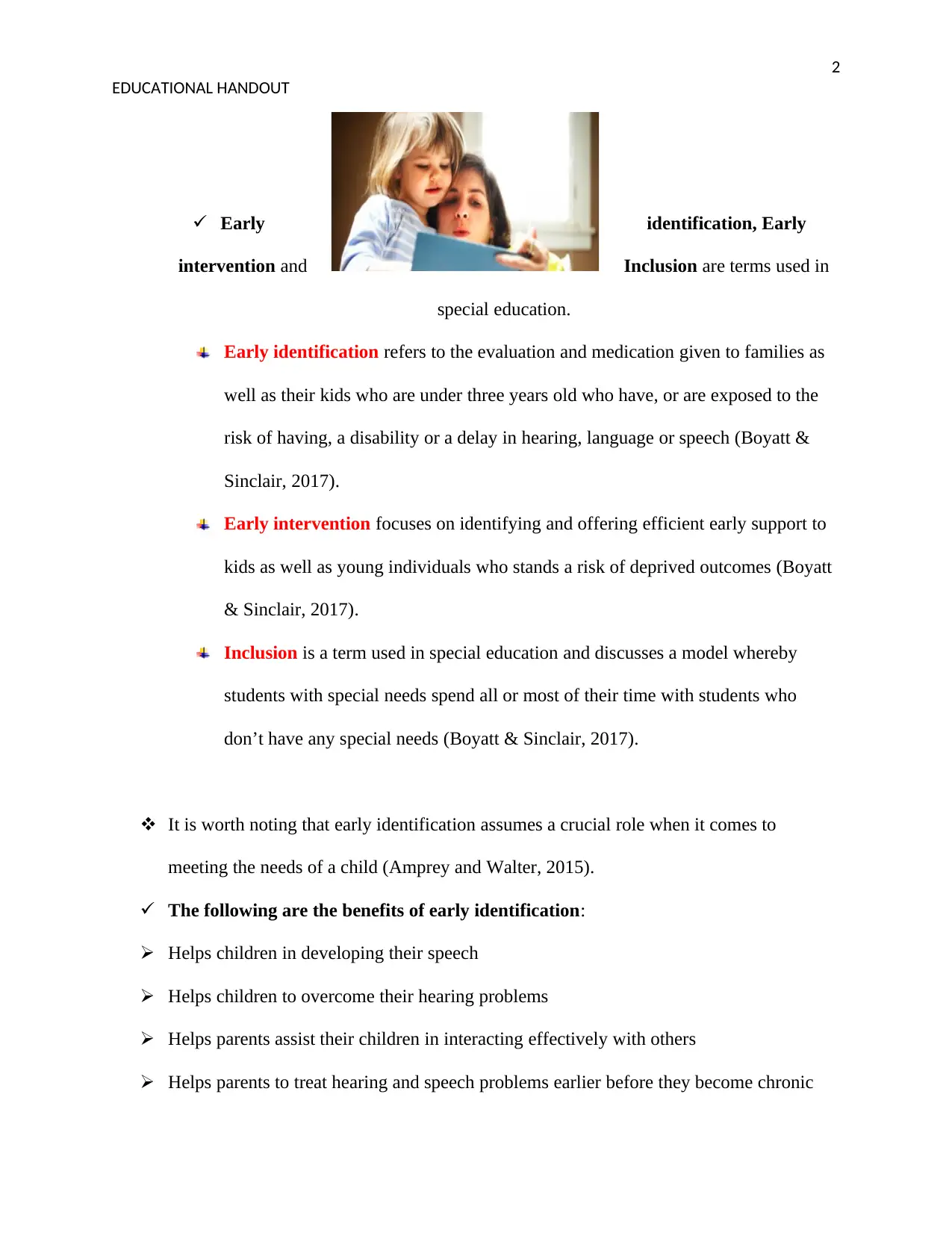
2
EDUCATIONAL HANDOUT
Early identification, Early
intervention and Inclusion are terms used in
special education.
Early identification refers to the evaluation and medication given to families as
well as their kids who are under three years old who have, or are exposed to the
risk of having, a disability or a delay in hearing, language or speech (Boyatt &
Sinclair, 2017).
Early intervention focuses on identifying and offering efficient early support to
kids as well as young individuals who stands a risk of deprived outcomes (Boyatt
& Sinclair, 2017).
Inclusion is a term used in special education and discusses a model whereby
students with special needs spend all or most of their time with students who
don’t have any special needs (Boyatt & Sinclair, 2017).
It is worth noting that early identification assumes a crucial role when it comes to
meeting the needs of a child (Amprey and Walter, 2015).
The following are the benefits of early identification:
Helps children in developing their speech
Helps children to overcome their hearing problems
Helps parents assist their children in interacting effectively with others
Helps parents to treat hearing and speech problems earlier before they become chronic
EDUCATIONAL HANDOUT
Early identification, Early
intervention and Inclusion are terms used in
special education.
Early identification refers to the evaluation and medication given to families as
well as their kids who are under three years old who have, or are exposed to the
risk of having, a disability or a delay in hearing, language or speech (Boyatt &
Sinclair, 2017).
Early intervention focuses on identifying and offering efficient early support to
kids as well as young individuals who stands a risk of deprived outcomes (Boyatt
& Sinclair, 2017).
Inclusion is a term used in special education and discusses a model whereby
students with special needs spend all or most of their time with students who
don’t have any special needs (Boyatt & Sinclair, 2017).
It is worth noting that early identification assumes a crucial role when it comes to
meeting the needs of a child (Amprey and Walter, 2015).
The following are the benefits of early identification:
Helps children in developing their speech
Helps children to overcome their hearing problems
Helps parents assist their children in interacting effectively with others
Helps parents to treat hearing and speech problems earlier before they become chronic
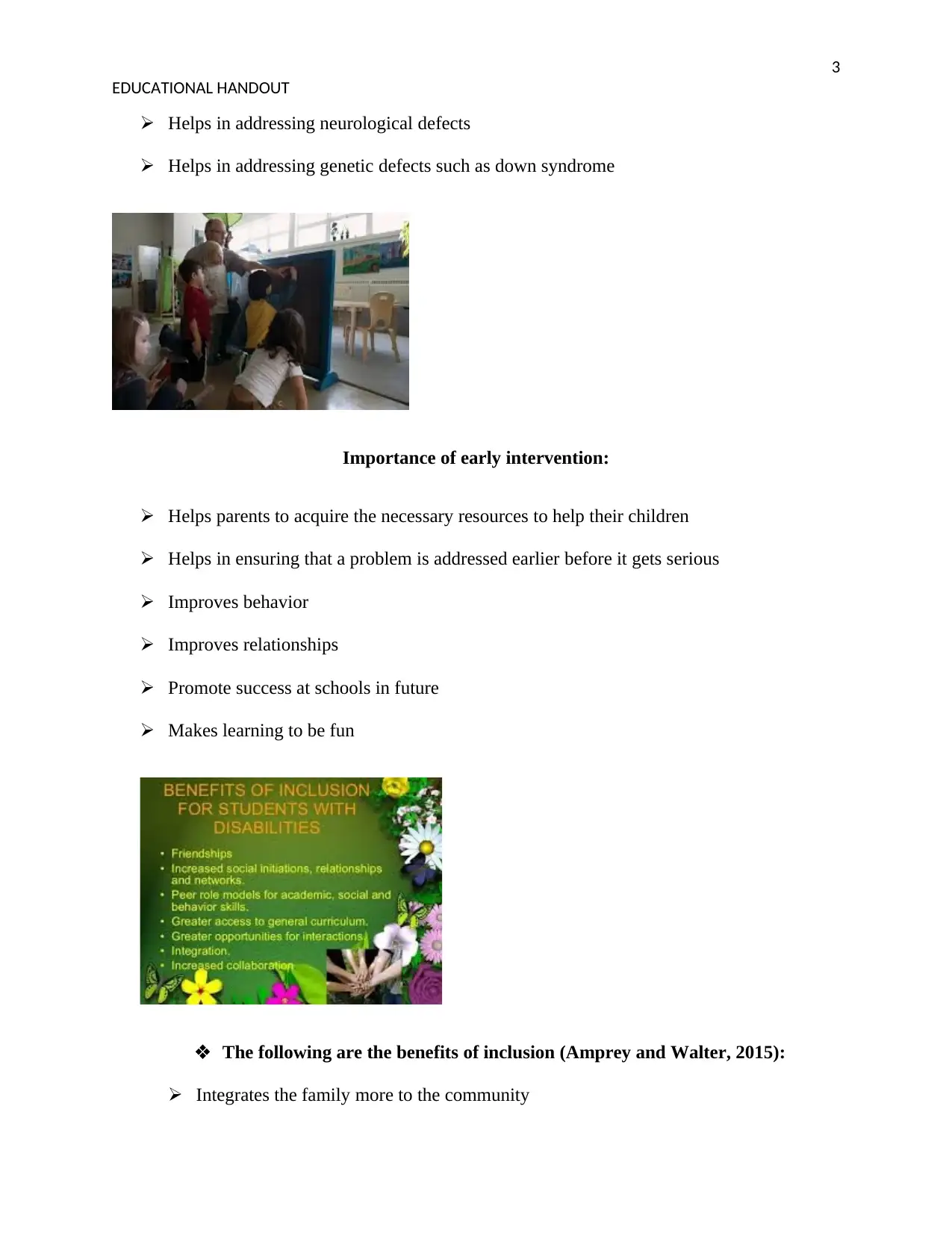
3
EDUCATIONAL HANDOUT
Helps in addressing neurological defects
Helps in addressing genetic defects such as down syndrome
Importance of early intervention:
Helps parents to acquire the necessary resources to help their children
Helps in ensuring that a problem is addressed earlier before it gets serious
Improves behavior
Improves relationships
Promote success at schools in future
Makes learning to be fun
The following are the benefits of inclusion (Amprey and Walter, 2015):
Integrates the family more to the community
EDUCATIONAL HANDOUT
Helps in addressing neurological defects
Helps in addressing genetic defects such as down syndrome
Importance of early intervention:
Helps parents to acquire the necessary resources to help their children
Helps in ensuring that a problem is addressed earlier before it gets serious
Improves behavior
Improves relationships
Promote success at schools in future
Makes learning to be fun
The following are the benefits of inclusion (Amprey and Walter, 2015):
Integrates the family more to the community
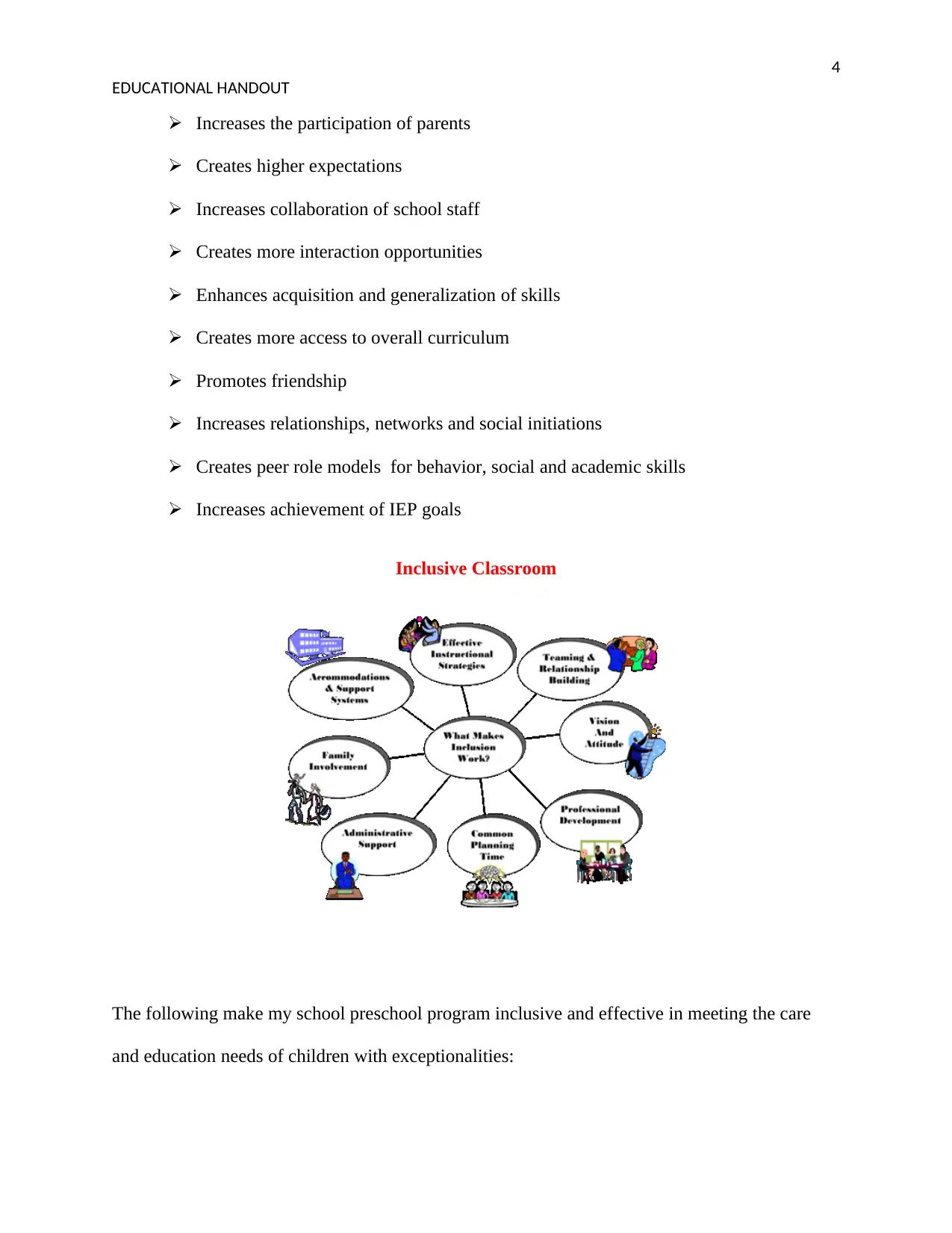
4
EDUCATIONAL HANDOUT
Increases the participation of parents
Creates higher expectations
Increases collaboration of school staff
Creates more interaction opportunities
Enhances acquisition and generalization of skills
Creates more access to overall curriculum
Promotes friendship
Increases relationships, networks and social initiations
Creates peer role models for behavior, social and academic skills
Increases achievement of IEP goals
Inclusive Classroom
The following make my school preschool program inclusive and effective in meeting the care
and education needs of children with exceptionalities:
EDUCATIONAL HANDOUT
Increases the participation of parents
Creates higher expectations
Increases collaboration of school staff
Creates more interaction opportunities
Enhances acquisition and generalization of skills
Creates more access to overall curriculum
Promotes friendship
Increases relationships, networks and social initiations
Creates peer role models for behavior, social and academic skills
Increases achievement of IEP goals
Inclusive Classroom
The following make my school preschool program inclusive and effective in meeting the care
and education needs of children with exceptionalities:
Secure Best Marks with AI Grader
Need help grading? Try our AI Grader for instant feedback on your assignments.
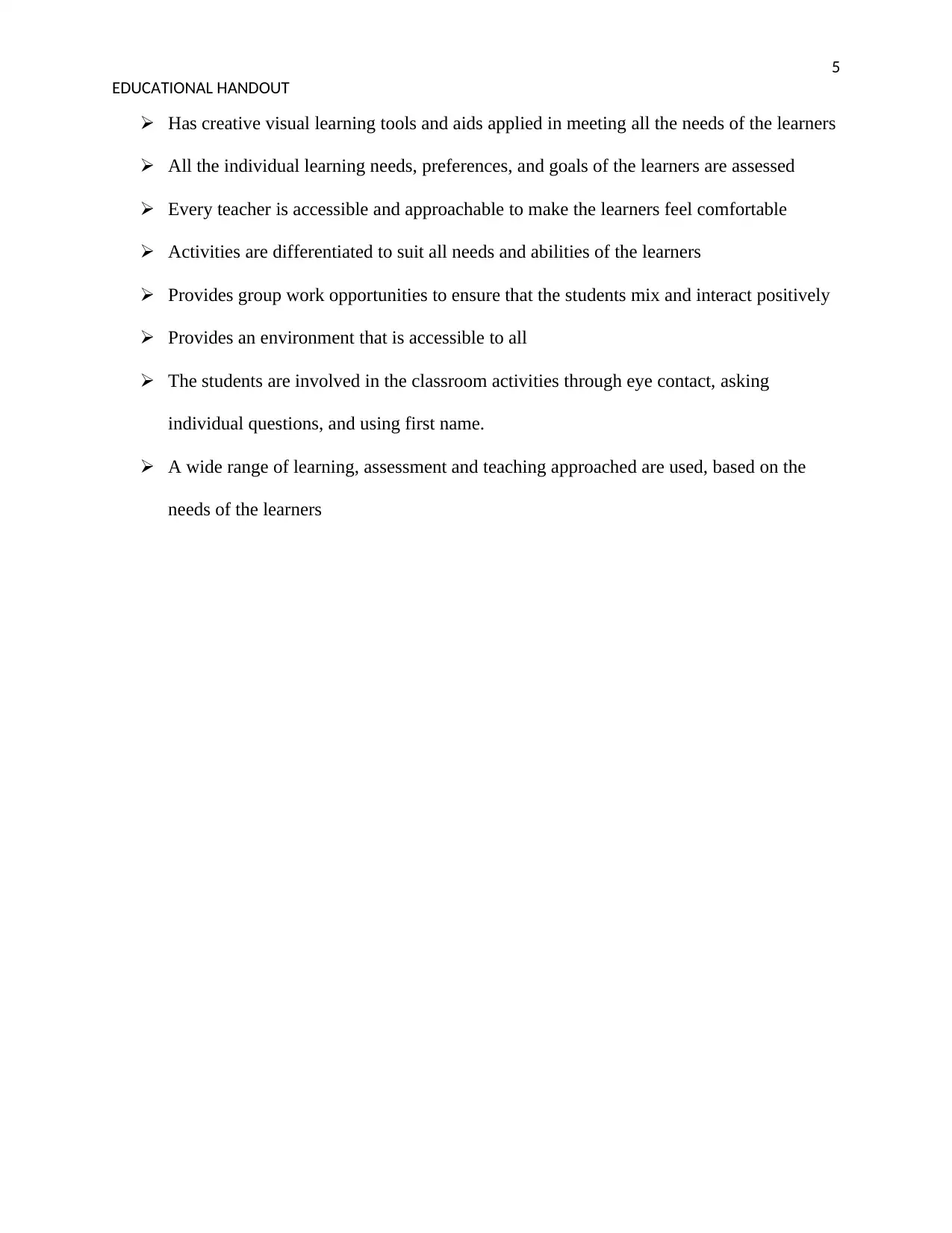
5
EDUCATIONAL HANDOUT
Has creative visual learning tools and aids applied in meeting all the needs of the learners
All the individual learning needs, preferences, and goals of the learners are assessed
Every teacher is accessible and approachable to make the learners feel comfortable
Activities are differentiated to suit all needs and abilities of the learners
Provides group work opportunities to ensure that the students mix and interact positively
Provides an environment that is accessible to all
The students are involved in the classroom activities through eye contact, asking
individual questions, and using first name.
A wide range of learning, assessment and teaching approached are used, based on the
needs of the learners
EDUCATIONAL HANDOUT
Has creative visual learning tools and aids applied in meeting all the needs of the learners
All the individual learning needs, preferences, and goals of the learners are assessed
Every teacher is accessible and approachable to make the learners feel comfortable
Activities are differentiated to suit all needs and abilities of the learners
Provides group work opportunities to ensure that the students mix and interact positively
Provides an environment that is accessible to all
The students are involved in the classroom activities through eye contact, asking
individual questions, and using first name.
A wide range of learning, assessment and teaching approached are used, based on the
needs of the learners
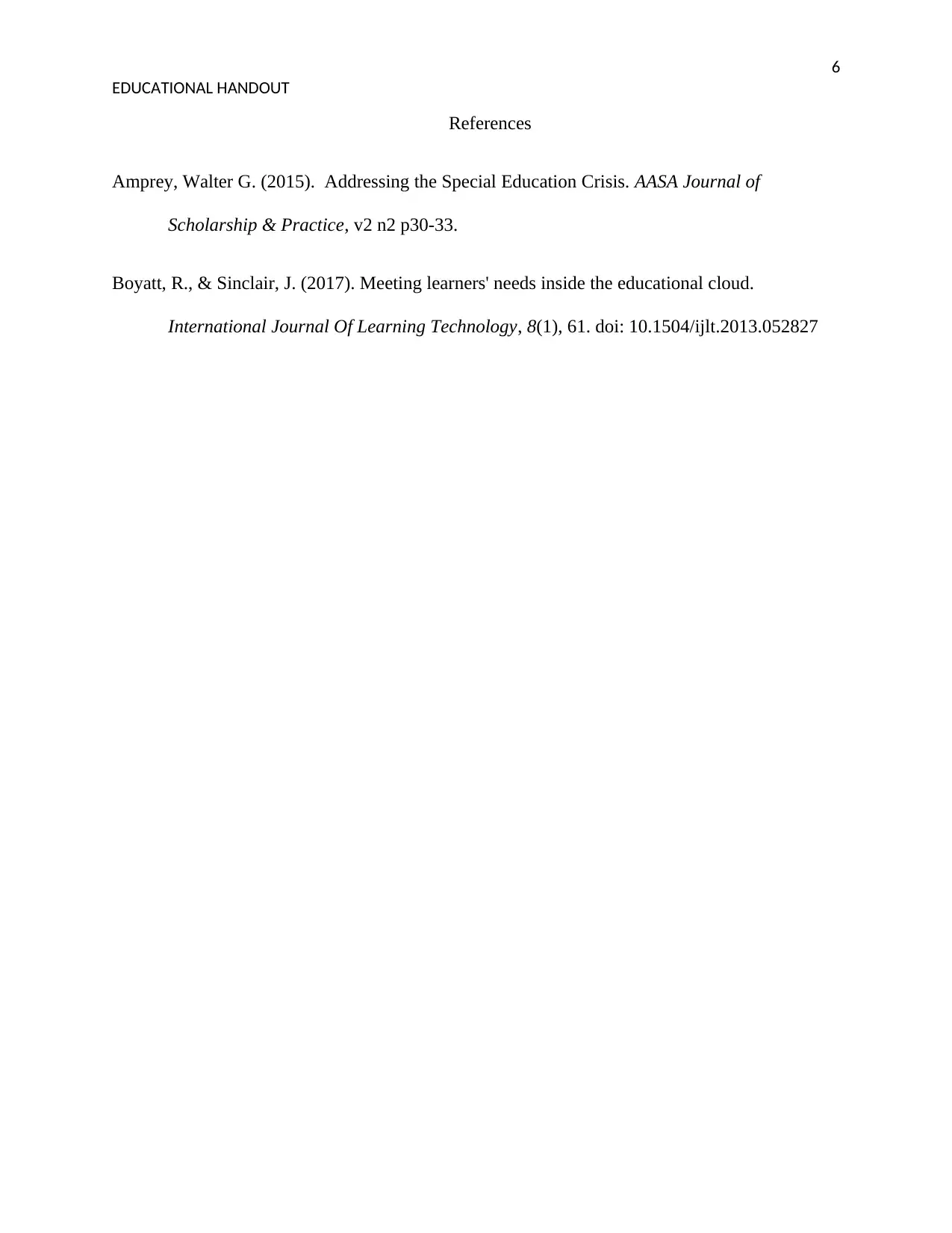
6
EDUCATIONAL HANDOUT
References
Amprey, Walter G. (2015). Addressing the Special Education Crisis. AASA Journal of
Scholarship & Practice, v2 n2 p30-33.
Boyatt, R., & Sinclair, J. (2017). Meeting learners' needs inside the educational cloud.
International Journal Of Learning Technology, 8(1), 61. doi: 10.1504/ijlt.2013.052827
EDUCATIONAL HANDOUT
References
Amprey, Walter G. (2015). Addressing the Special Education Crisis. AASA Journal of
Scholarship & Practice, v2 n2 p30-33.
Boyatt, R., & Sinclair, J. (2017). Meeting learners' needs inside the educational cloud.
International Journal Of Learning Technology, 8(1), 61. doi: 10.1504/ijlt.2013.052827
1 out of 6
Related Documents
Your All-in-One AI-Powered Toolkit for Academic Success.
+13062052269
info@desklib.com
Available 24*7 on WhatsApp / Email
![[object Object]](/_next/static/media/star-bottom.7253800d.svg)
Unlock your academic potential
© 2024 | Zucol Services PVT LTD | All rights reserved.




